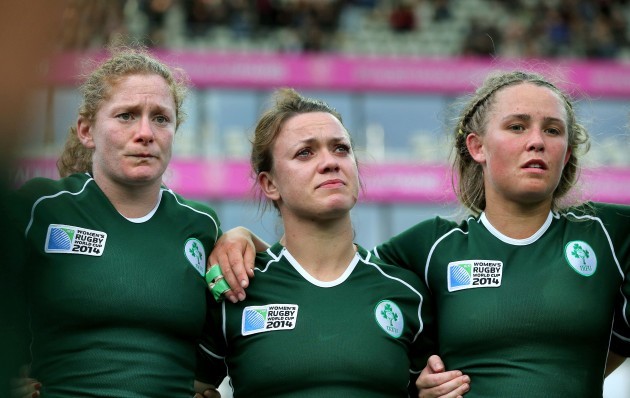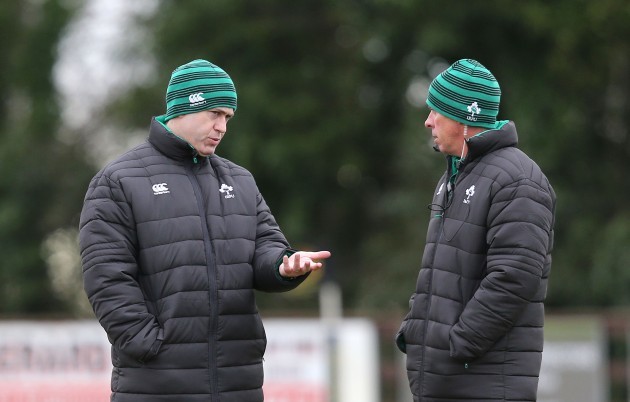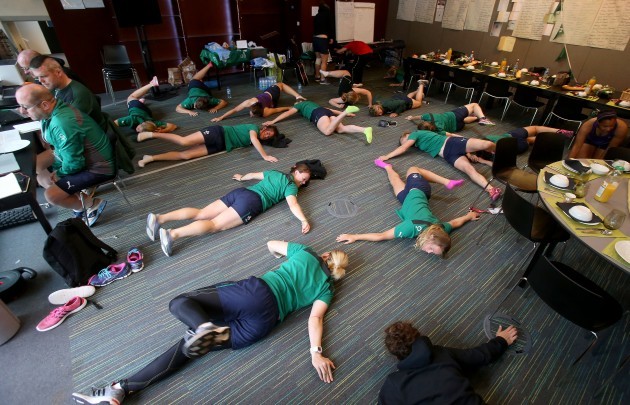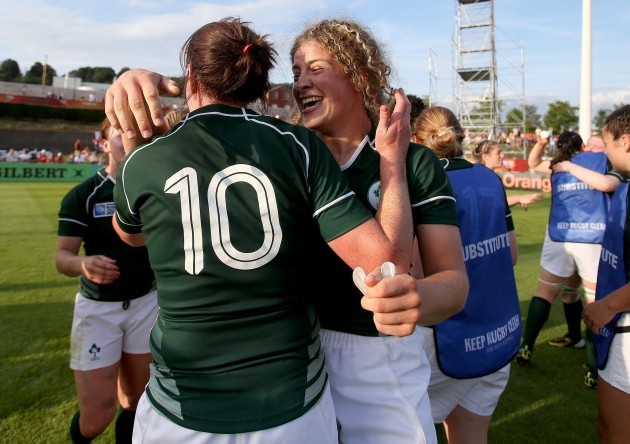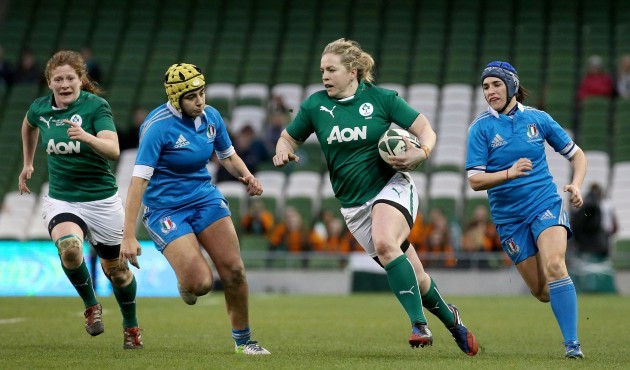‘IF YOU ALWAYS do what you’ve always done, you’ll get what you’ve always got. ‘ — Henry Ford.
Irish rugby has just started a quiet revolution around the team that was its most high profile group late last summer.
If you’re lucky enough to see the Women in Green run out for the opening game of this year’s Six Nations in Italy on Friday night (KO 18.00), it’s not just the faces of the personnel that will look a little different, the entire organisation of the team has been the subject of a root branch review.
While the actions under the surface aim to look after the strategy in the long term, front of house is where there will be an immediate effect. The squad changes cannot be underestimated. The retirements of captain Fiona Coghlan and centres Grace Davitt and Lynne Cantwell don’t even account for half of the absentees from the 22 named in the World Cup win over New Zealand. Another Grand Slam winner is gone from the back room team after Philip Doyle stepped back able to survey a job well done as head coach.
The man stepping into his considerable shoes is former international Tom Tierney. Under the new management structure for the women’s game Tierney, as head coach of the 15-a-side team, will dovetail with Anthony Eddy who comes in as director of women’s rugby from a similar post in Australia.
Eddy will also double-job as head coach of the women’s Sevens squad with Tierney assisting. That arrangement exemplifies the revised intertwining approach to the female side of the Union – neither form of the game is being prioritised.
Speaking at the Six Nations launch in London last week, the 15-a-side coach was keen to keep an equal focus on the shortened form of the sport when interviewed by The42:
Harmony
“We’re conscious of the fact that Sevens and 15s can live together. Other nations have it as a complete divide, we don’t see it that way. If we can execute the best we can from a 15s point of view and a sevens point of view we’ll get the best players on the field in both forms of the game and that can only be a success for us.”
Despite the changes on and off the field, Tierney comes into a setup which, at a playing level, is steady and professional in everything but name. Each and every player dedicates huge chunks of their time to making this collective and outfit that has proven itself at the absolute highest level of the sport.
“They wouldn’t have been as successful as they were – to win the Six Nations or do so well in the World Cup – if the focus wasn’t as professional as it is. Very professional within there; but also knowledgeable, very aware of styles of rugby, game management and understanding was of a high order on top of a very competent skill level. [That] was critical and it goes to show why Ireland were so successful.
“Obviously there has been a changeover in personnel and my job is to marry the new players into the squad on top of promoting new players to the senior status. And hopefully I can add some new thoughts and ideas on how I want to play and how the girls want to play and hopefully bring them to the next level.”
To achieve that lofty goal, Tierney’s over-arching ethos will be to get his players’ skills at a consistently high level so that no style will be unfamiliar.
“My philosophy is doing the right things at the right time. If that means keeping it close, do that, but if it means opening up and going wide and playing a 15-player game we’ll do that.
It’s about getting across to players the necessity for both, because teams will have their homework done on us. It’s about employing a new style of rugby that can handle any type of defence that comes at us and getting the players to realise it’s a 15 player game and getting people to show the basic skills no matter what position they are on the field. [So] when it gets to phaseplay to be able to handle yourself on the field both in defence and attack.
“The talent is there, we’re able to do it. That’s the bottom line. You can all the philosophies in the world, but if you don’t have the players to execute it then you’re going nowhere.”
The talent is there, certainly, but this transition from the vintage 2014 team into 2015 will be a stark reminder that talent like Cantwell, Davitt and Coghlan cannot stick around forever. It has to be regenerated, and so scouting and talent spotting – in a variety of sports – makes up a third prong of Tierney’s hefty workload.
“Over the last year or so we’ve realised that there’s so much hidden talent out there in other sports. It’s about getting out there and seeing top quality athletes and seeing who wants to come and play Irish rugby for the national teams. That’s the goal, and the more players we get the better chance we have of having quality every time we’re on the field.”
He adds: “The training age of a lot of girls is quite [low]. They’ve come to the game quite late and some of them have been playing a year or less and they’re straight into the Irish squad. It just goes to show their natural talent and natural athletic ability. Then it’s our job to fast-track them in rugby skills and understanding and hopefully marrying the two together.”
Tierney has had the opportunity to perform his primary role and coach his 30-strong squad for four camps before going headlong into the challenge of the Six Nations Championship. His squad includes 12 uncapped players: so it’s understandable that his basics-first policy is in full force. And the squad focus has been trained no further than the opening night against Italy.
“There’s a new dynamic and new management team. There’s a lot of flux, we’re aware of that. We’re just getting everyone on the same page as quickly as possible, then have a tight little gameplan going over to Italy and be able to execute that.”
Executing plans will almost certainly bring victories. However, with an Olympic Games on the horizon, IRFU performance director David Nucifora will be measuring more than a single metric when determining whether Eddy and Tierney’s new look project is a success or not.
“One way of looking at it is you win more games than you lose. It’s a bit bigger than that,” says the Limerick coach.
“It’s about creating a pool of talent that can compete in both forms of the game, that can compete at international level going forward. Because of the success over the last two years, we want to go a stage further. To have that we need to get as many players playing international quality rugby as we can.”
The revolution (at least to start with in Stadio Mario Lodigiani) will not be televised.
- Originally published 05.40
